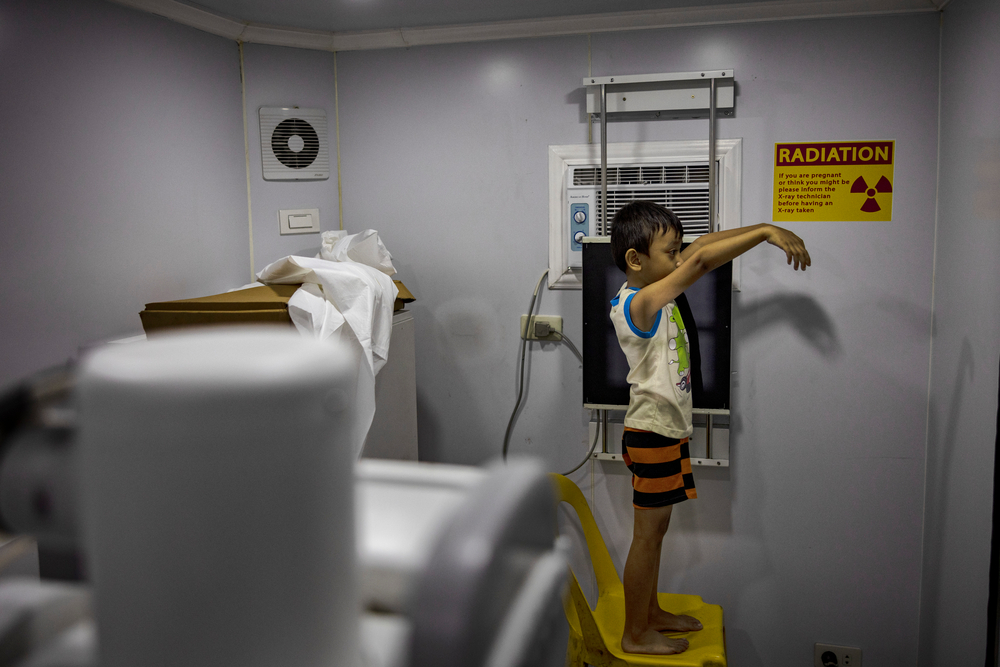COPENHAGEN – At the World Conference on Lung Health this week, Doctors Without Borders / Médecins Sans Frontières (MSF) released data from its operational research highlighting that using the World Health Organization (WHO) recommended treatment decision algorithms, for diagnosing tuberculosis (TB) in children can nearly double the number of children who can be initiated on lifesaving TB treatment.
The WHO algorithms are guided scoring systems that allow physicians to initiate TB treatment if the symptoms of the child are strongly indicative of TB disease, even if laboratory tests are unavailable or test results appear negative. Doctors Without Borders urged policymakers to adopt the WHO algorithms in their national guidelines and ensure timely implementation so that more children with TB can access life-saving diagnosis and treatment.
Doctors Without Borders Test Avoid Cure Tuberculosis in Children (TACTiC) research study evaluated the WHO algorithms in 1,846 children under 10 years with symptoms suggestive of pulmonary TB between August 2023 and October 2025 across five countries: Uganda, Niger, Nigeria, Guinea, and South Sudan, including children facing severe acute malnutrition and children living with HIV.
Doctors Without Borders data showed that the WHO algorithms identified the majority of children with TB correctly and, on average, doubled the proportion of children who could be initiated on TB treatment. Doctors Without Borders’ findings further showed that the introduction of the WHO algorithms not only supports health care workers in the diagnosis of TB in children and is feasible to use, but also increases parents’ satisfaction with the timely TB care their children received.
“Before, health workers relied on coughing, and as long as children weren’t coughing, they thought they didn’t have tuberculosis,” said Dr. Angeline Dore, focal point for the TACTiC project in Guinea. “The WHO algorithms now tell us not to rely on coughing; there are other signs for TB as well.”
An estimated 1.2 million children and young adolescents under the age of 15 years fell ill with TB in 2024. Although the disease can be cured, TB in children often remains undiagnosed, as the currently available laboratory tests are designed for adults and do not work sufficiently well in children.
In addition, most laboratory tests require a sputum sample, which children struggle to produce, and even when they do, the low bacterial levels in their lungs often make detection by laboratory tests impossible. The WHO Global Tuberculosis Report published last week showed that a staggering 43% of the children with TB were misdiagnosed in 2024 and could not access life-saving treatment.

In 2022, WHO revised its guidance for the diagnosis, treatment, and prevention in children management of TB in children to be in line with the most recent scientific evidence. Among several important updates, the new WHO guidelines recommend the use of treatment decision algorithms for the diagnosis of TB in children in settings with and without access to X-ray. However, despite being recommended by the WHO, many countries have not yet adopted these algorithms in their national guidelines nor facilitated their implementation in healthcare facilities.
“Too many children with TB are still slipping through the cracks in the absence of effective diagnostic tools,” said Dr Helena Huerga, principal investigator of the TACTiC research study conducted by Doctors Without Borders. “Our findings prove that WHO’s treatment decision algorithms, for which we do not need lab test results to initiate TB treatment in children, work in real-world settings and can potentially save many more children’s lives if implemented. The science is clear – what’s now missing is the political will to put it into practice.”
With the recent global aid funding cuts that threaten to widen gaps in identifying and treating people with TB, Doctors Without Borders called on countries and their stakeholders, including international donors, to step up and ensure sustained funding for TB care for all, especially young children, as they already face the largest gaps in accessing TB care.
“In addition to timely adoption and implementation of the WHO algorithms, policymakers, donors, and implementers must also anticipate and plan for an increase in supply of medicines needed to treat children to ensure that all children who are diagnosed with TB can access TB treatment without any delay,” said Daniel Martinez Garcia, project leader of the Doctors Without Borders TACTiC project.



